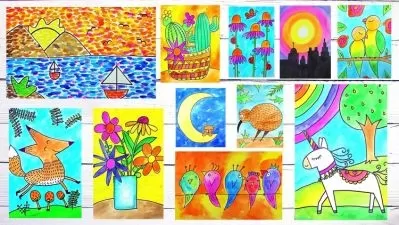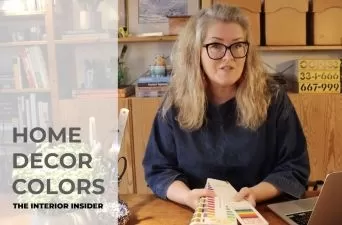About Oil PaintingLearn More
Oil paints, unlike acrylic and watercolors, are difficult to work with because they take a long time to dry. The chemistry behind the blending must be perfect, and the proper finish is very hard to achieve. However, when done correctly, very few paint types appear as beautiful as oil paint does. Mastered by the greatest professional artists, oil paintings allow for a depth of color, demonstration of perspective, and vividness of brushstrokes unmatched by other techniques. By taking oil painting classes on Udemy, you will learn to paint depictions of still life, landscapes, portraits, and many other fine art techniques. Whether you take a course for leisure or have aspirations to become the next Picasso, you will not regret taking an oil painting class on Udemy.
Sort by:
Sorting
The newest
Most visited
Course time
Subtitle
Filtering
Courses
Subtitle

SkillShare


Suzanne Kurilla
Oil Pastels for Beginners: Sweet Treats and Desserts 23:53
English subtitles
04/05/2023
Subtitle

Udemy


Em Winn
Art for Beginners & Kids: Drawing & Painting With Bold Color 3:31:12
English subtitles
03/01/2023
Subtitle

Udemy


Em Winn
Art for Beginners: Draw & Acrylic Paint 8 Fearless Animals 3:42:56
English subtitles
03/01/2023
Frequently asked questions about Oil Painting
Oil painting is the process of applying colored pigments mixed with linseed oil to a support such as canvas. In oil paints, the amount of colored pigment and the consistency of the color are integral to a high-quality finished painting. Oil paints have a thick, buttery texture that can be thinned out or diluted using turpentine. Since oil paint takes a while to dry, it’s perhaps the most forgiving medium. The artist can return to their painting the following day to work on the same area without consequence. Also, artists can apply oil paint in thin, almost translucent layers. This results in a completed painting that appears luminous with bold, rich hues, as was the desired effect of Old Master painters. In modern times, artists have pushed the boundaries of the oil medium further. Some painters will apply thick, textured layers of impasto paint with a palette knife. Some will pour paints directly onto the support or even “stain” the raw canvas with thinned paint.
To start oil painting, you'll need a set of primary-color paints including black and white. Plus, you'll need a set of brushes (dedicated to only oil painting), a palette, a palette knife for mixing colors, a support (primed canvas, canvas board, or paper), turpentine to thin paints, extra linseed oil, gesso, damar varnish (regular or glossy), and maybe even a pencil or charcoal to sketch your underdrawing. If you are not painting in a well-ventilated area, you should replace the turpentine with an odorless turpenoid. If you're working on a course, your instructor may also list other specific tools like an easel or recommend specific brushes or paint colors, depending on the lesson.
Oil painting can be a more complex type of painting to master. However, with the proper guidance and learning each step of the process, you can learn the basics relatively quickly. First, you'll need to get the necessary materials and supplies, learn how to care for your tools, prepare your canvas or other support, mix colors, and create a basic composition using real-life objects or photographic references. One lesson could teach you about how to prime the support surface, start with an underpainting, paint layers of color, and complete your finished work with a layer of varnish. As you advance, you can delve deeper into specific genres of painting like portraits, landscapes, or still-life to learn tailored tricks of the trade. Remember, even if the oil painting looks dry on the surface, it's more than likely still wet underneath. So refrain from storing your paintings on top of one another and exercise patience—oil paint takes a long time to dry.








